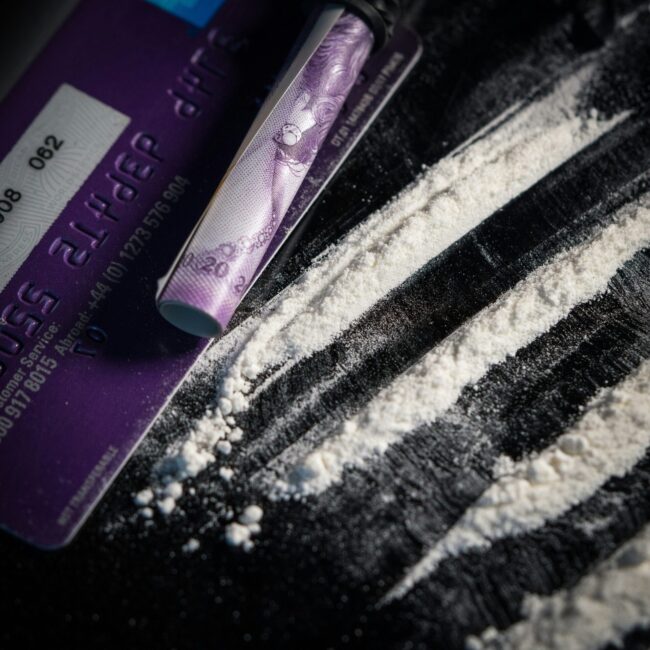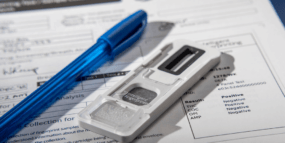No products in the cart.
Substance misuse is a pervasive issue that affects individuals, families, and communities worldwide. It involves the harmful or hazardous use of psychoactive substances, including alcohol and illicit drugs. Unlike casual use, substance misuse often leads to significant health problems, addiction, and adverse social consequences. Recognising the symptoms and signs early on is crucial for timely intervention and support.
Innovative technologies like fingerprint drug testing are enhancing our ability to detect substance misuse swiftly and non-invasively. Tools such as the Intelligent Fingerprinting Drug Testing System enable on-the-spot screening for recent drug use, contributing to more effective monitoring and support strategies.
Commonly Misused Substances
Understanding which substances are commonly misused helps in identifying specific signs and tailoring appropriate interventions.
Alcohol
Prescription Medications
- Opioids(Morphine, Oxycodone)
- Benzodiazepines(Valium, Xanax)
- Stimulants (Adderall, Ritalin)
Illicit Drugs
- Cannabis
- Cocaine
- Heroin
- Methamphetamine
Over-the-Counter Medications
- Cough syrups containing dextromethorphan
Others
- Inhalants
- Synthetic drugs (Synthetic cannabinoids)
Physical Symptoms
Physical signs of substance misuse can vary depending on the substance but often include noticeable changes in appearance and health.
Changes in Appearance
- Eyes: Bloodshot or glazed eyes; pupils may appear dilated or constricted.
- Weight Fluctuations: Sudden weight loss or gain without a clear reason.
- Hygiene: Neglect of personal grooming and cleanliness.
Health Issues
- Respiratory Problems: Chronic cough or frequent respiratory infections.
- Nosebleeds: Particularly common with cocaine use.
- Tremors or Seizures: Uncontrolled shaking or convulsions.
Sleep Patterns
- Insomnia: Difficulty falling or staying asleep.
- Hypersomnia: Excessive sleeping.
- Erratic Sleep Schedules: Unusual times of sleep and wakefulness.
Behavioural Signs
Behavioural changes often accompany physical symptoms, reflecting the impact of substance misuse on an individual’s lifestyle and relationships.
Social Changes
- Isolation: Withdrawal from friends and family.
- New Peer Groups: Association with new, often questionable social circles.
- Secretive Behaviour: Unexplained absences or evasiveness about activities.
Performance Issues
- Work or Academic Decline: Drop in productivity, grades, or overall performance.
- Absenteeism: Frequent unexplained absences or tardiness.
Financial Problems
- Unexplained Need for Money: Frequently asking to borrow money without a clear reason.
- Stealing: Taking money or valuables from others.
Legal Troubles
- Arrests: Legal issues related to possession, DUI, or other substance-related offences.
- Criminal Activities: Engagement in theft, vandalism, or other illegal acts.
Psychological Indicators
Substance misuse significantly affects mental health, leading to various psychological symptoms.
Mood Swings
- Irritability: Unusual agitation or frustration.
- Aggression: Increased propensity for confrontations or violence.
- Depression: Feelings of sadness, hopelessness, or apathy.
Cognitive Impairment
- Confusion: Difficulty understanding simple tasks or instructions.
- Memory Problems: Frequent forgetfulness or blackouts.
Mental Health Disorders
- Anxiety: Excessive worry or panic attacks.
- Paranoia: Unfounded suspicions or mistrust of others.
- Hallucinations: Seeing or hearing things that aren’t there.
The Role of Drug Testing in Detection
Early detection of substance misuse can significantly improve intervention outcomes. Drug testing is a vital tool in identifying misuse, with various methods available.
Traditional Drug Testing Methods
- Urine Tests
- Blood Tests
- Oral Swab Tests
Limitations of Traditional Methods
- Invasiveness: Often require bodily fluids or samples.
- Privacy Concerns: Can be uncomfortable for the individual.
- Biohazard Risks: Handling of potentially infectious materials.
Fingerprint Drug Testing
Intelligent Fingerprinting offers a revolutionary approach to drug testing through its fingerprint-based system.
How It Works
The system analyses tiny traces of sweat in fingerprints to detect recent drug use. It screens for substances such as cannabis, cocaine, opiates, and methamphetamine.
Advantages
- Quick and Easy: Fingerprint sample collection takes seconds, with on-screen results in just 10 minutes.
- Hygienic: Non-invasive and non-biohazardous, eliminating the need for handling bodily fluids.
- Portable and Dignified: Enables testing anytime, almost anywhere, without special facilities.
- Cost-Effective: Reduces the need for specialist staff and facilities, saving time and money.
- Comprehensive Solution: Offers a one-stop solution with an available laboratory confirmation service.
Consequences of Untreated Substance Misuse
Failing to address substance misuse can lead to severe and long-lasting repercussions.
Health Complications
- Organ Damage: Liver, heart, and brain damage due to prolonged substance use.
- Infectious Diseases: Increased risk of HIV/AIDS, hepatitis, and other infections.
Mental Health Impact
- Co-occurring Disorders: Development of additional mental health issues.
- Increased Suicide Risk: Heightened likelihood of self-harm or suicidal ideation.
Social and Legal Issues
- Relationship Strain: Breakdown of family ties and friendships.
- Employment Problems: Job loss or difficulty maintaining employment.
- Legal Penalties: Fines, incarceration, and a criminal record.
The Importance of Early Intervention
Early detection and intervention can dramatically alter the trajectory of substance misuse. Technologies like the Intelligent Fingerprinting Drug Testing System facilitate timely and efficient detection, enabling prompt support.
Benefits of Early Detection
- Improved Outcomes: Higher success rates in treatment and recovery.
- Health Preservation: Prevention of irreversible health damage.
Approach
- Open Communication: Address concerns with empathy and without judgment.
- Encourage Professional Help: Guide individuals toward medical and therapeutic support services.
Recognising the symptoms and signs of substance misuse is a critical step toward helping those affected. By combining awareness with modern detection methods and compassionate intervention, we can make significant strides in addressing substance misuse.




